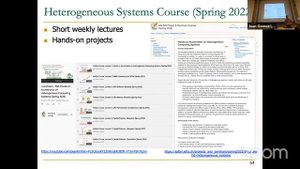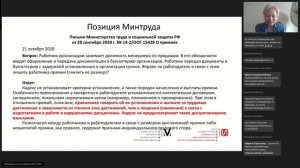
 1:46:53
1:46:53
2025-06-10 09:06

 57:08
57:08

 57:08
57:08
2025-10-23 12:03

 1:35:20
1:35:20

 1:35:20
1:35:20
2025-05-27 14:10

 27:58
27:58

 27:58
27:58
2025-09-20 10:00

 1:57:38
1:57:38

 1:57:38
1:57:38
2025-09-15 15:22

 8:30
8:30

 8:30
8:30
2025-09-12 15:00

 5:52
5:52

 5:52
5:52
2025-09-25 23:50

 7:40
7:40

 7:40
7:40
2025-09-25 17:00

 3:20
3:20

 3:20
3:20
2025-09-11 10:37

 34:56
34:56

 34:56
34:56
2025-09-12 16:44

 1:23:24
1:23:24

 1:23:24
1:23:24
2025-09-18 12:00

 1:55:45
1:55:45

 1:55:45
1:55:45
2025-09-16 20:14

 4:18
4:18

 4:18
4:18
2025-09-21 11:49

 23:31
23:31

 23:31
23:31
2025-09-28 11:00

 32:16
32:16

 32:16
32:16
2025-09-20 09:34

 1:06:32
1:06:32

 1:06:32
1:06:32
2025-09-16 12:56

 19:12
19:12

 19:12
19:12
2025-09-11 14:41

 2:15
2:15
![ESCO - За тобой (Премьера клипа 2025)]() 2:13
2:13
![Мухит Бобоев - Маликам (Премьера клипа 2025)]() 3:18
3:18
![Искандар Шокалонов - Дустларим (Премьера 2025)]() 4:00
4:00
![Зара - Прерванный полет (Премьера клипа 2025)]() 5:08
5:08
![Равшанбек Балтаев - Кастюм (Премьера клипа 2025)]() 3:59
3:59
![Бобур Ахмад - Куролмаслар (Премьера клипа 2025)]() 3:33
3:33
![Бриджит - Ласковый май (Премьера клипа 2025)]() 3:20
3:20
![Жамхур Хайруллаев - Битта дона (Премьера клипа 2025)]() 2:49
2:49
![Азамат Ражабов - Нигорим (Премьера клипа 2025)]() 3:52
3:52
![Magas - Только ты (Премьера клипа 2025)]() 3:04
3:04
![Roza Zərgərli, Мурад Байкаев - Неизбежная любовь (Премьера клипа 2025)]() 2:34
2:34
![Гайрат Усмонов - Унутаман (Премьера клипа 2025)]() 5:17
5:17
![BITTUEV - Не плачь (Премьера клипа 2025)]() 2:18
2:18
![Амина Магомедова - Не пара (Премьера 2025)]() 3:40
3:40
![Мохито, DJ DimixeR - Перед рассветом (Премьера клипа 2025)]() 2:29
2:29
![A'Studio – Она не виновата (Премьера клипа 2025)]() 2:13
2:13
![Игорь Балан - Белая зима (Премьера 2025)]() 3:10
3:10
![Абдуллах Борлаков, Мекка Борлакова - Звездная ночь (Премьера клипа 2025)]() 4:25
4:25
![Cvetocek7 - Запретила (Премьера клипа 2025)]() 2:49
2:49
![NIKA DUBIK, Winter Spirit - Искры (Премьера клипа 2025)]() 4:27
4:27
![Чумовая пятница 2 | Freakier Friday (2025)]() 1:50:38
1:50:38
![Терминатор 2: Судный день | Terminator 2: Judgment Day (1991) (Гоблин)]() 2:36:13
2:36:13
![Кровавый четверг | Thursday (1998) (Гоблин)]() 1:27:51
1:27:51
![Отчаянный | Desperado (1995) (Гоблин)]() 1:40:18
1:40:18
![Грязь | Filth (2013) (Гоблин)]() 1:37:25
1:37:25
![Пойман с поличным | Caught Stealing (2025)]() 1:46:45
1:46:45
![Чёрный телефон 2 | Black Phone 2 (2025)]() 1:53:55
1:53:55
![Только ты | All of You (2025)]() 1:38:22
1:38:22
![Фантастическая четвёрка: Первые шаги | The Fantastic Four: First Steps (2025)]() 1:54:40
1:54:40
![Школьный автобус | The Lost Bus (2025)]() 2:09:55
2:09:55
![Диспетчер | Relay (2025)]() 1:51:56
1:51:56
![Большой Лебовски | The Big Lebowski (1998) (Гоблин)]() 1:56:59
1:56:59
![Большое смелое красивое путешествие | A Big Bold Beautiful Journey (2025)]() 1:49:20
1:49:20
![Баллада о маленьком игроке | Ballad of a Small Player (2025)]() 1:42:60
1:42:60
![Тот самый | Him (2025)]() 1:36:20
1:36:20
![Гедда | Hedda (2025)]() 1:48:23
1:48:23
![Хищник | Predator (1987) (Гоблин)]() 1:46:40
1:46:40
![Властелин колец: Две сорванные башни | The Lord of the Rings: The Two Towers (2002) (Гоблин)]() 2:58:60
2:58:60
![Властелин колец: Братва и кольцо | The Lord of the Rings: The Fellowship of the Ring (2001) ГОБЛИН]() 2:58:24
2:58:24
![Заклятие 4: Последний обряд | The Conjuring: Last Rites (2025)]() 2:15:54
2:15:54
![Оранжевая корова]() 6:30
6:30
![Панда и петушок Лука]() 12:12
12:12
![Люк - путешественник во времени]() 1:19:50
1:19:50
![Новое ПРОСТОКВАШИНО]() 6:30
6:30
![МиниФорс]() 0:00
0:00
![Пип и Альба. Приключения в Соленой Бухте! Сезон 1]() 11:02
11:02
![Школьный автобус Гордон]() 12:34
12:34
![Сандра - сказочный детектив Сезон 1]() 13:52
13:52
![Шахерезада. Нерассказанные истории Сезон 1]() 23:53
23:53
![МегаМен: Полный заряд Сезон 1]() 10:42
10:42
![Синдбад и семь галактик Сезон 1]() 10:23
10:23
![Хвостатые песенки]() 7:00
7:00
![Корги по имени Моко. Новый питомец]() 3:28
3:28
![Приключения Тайо]() 12:50
12:50
![Артур и дети круглого стола]() 11:22
11:22
![Умка]() 7:11
7:11
![Псэмми. Пять детей и волшебство Сезон 1]() 12:17
12:17
![Пип и Альба Сезон 1]() 11:02
11:02
![Минифорс. Сила динозавров]() 12:51
12:51
![Котёнок Шмяк]() 11:04
11:04

 2:15
2:15Скачать видео
| 256x144 | ||
| 424x240 | ||
| 640x360 | ||
| 848x480 | ||
| 1280x720 |
 2:13
2:13
2025-10-31 12:20
 3:18
3:18
2025-11-02 10:30
 4:00
4:00
2025-11-02 10:12
 5:08
5:08
2025-10-31 12:50
 3:59
3:59
2025-11-04 18:03
 3:33
3:33
2025-11-02 10:17
 3:20
3:20
2025-11-07 13:34
 2:49
2:49
2025-11-06 13:20
 3:52
3:52
2025-11-07 14:08
 3:04
3:04
2025-11-05 00:49
 2:34
2:34
2025-11-05 11:45
 5:17
5:17
2025-11-06 13:07
 2:18
2:18
2025-10-31 15:53
 3:40
3:40
2025-11-05 00:22
 2:29
2:29
2025-11-07 13:53
 2:13
2:13
2025-10-31 12:53
 3:10
3:10
2025-11-07 14:48
 4:25
4:25
2025-11-07 13:49
 2:49
2:49
2025-11-04 17:50
 4:27
4:27
2025-10-31 16:00
0/0
 1:50:38
1:50:38
2025-10-16 16:08
 2:36:13
2:36:13
2025-10-07 09:27
 1:27:51
1:27:51
2025-09-23 22:52
 1:40:18
1:40:18
2025-09-23 22:53
 1:37:25
1:37:25
2025-09-23 22:52
 1:46:45
1:46:45
2025-10-02 20:45
 1:53:55
1:53:55
2025-11-05 19:47
 1:38:22
1:38:22
2025-10-01 12:16
 1:54:40
1:54:40
2025-09-24 11:35
 2:09:55
2:09:55
2025-10-05 00:32
 1:51:56
1:51:56
2025-09-24 11:35
 1:56:59
1:56:59
2025-09-23 22:53
 1:49:20
1:49:20
2025-10-21 22:50
 1:42:60
1:42:60
2025-10-31 10:53
 1:36:20
1:36:20
2025-10-09 20:02
 1:48:23
1:48:23
2025-11-05 19:47
 1:46:40
1:46:40
2025-10-07 09:27
 2:58:60
2:58:60
2025-09-23 22:52
 2:58:24
2:58:24
2025-09-23 22:52
 2:15:54
2:15:54
2025-10-13 19:02
0/0
 6:30
6:30
2022-03-31 18:49
 12:12
12:12
2024-11-29 14:21
 1:19:50
1:19:50
2024-12-17 16:00
 6:30
6:30
2018-04-03 10:35
 0:00
0:00
2025-11-08 05:50
2021-09-22 23:36
 12:34
12:34
2024-12-02 14:42
2021-09-22 20:39
2021-09-22 23:25
2021-09-22 21:43
2021-09-22 23:09
 7:00
7:00
2025-06-01 11:15
 3:28
3:28
2025-01-09 17:01
 12:50
12:50
2024-12-17 13:25
 11:22
11:22
2023-05-11 14:51
 7:11
7:11
2025-01-13 11:05
2021-09-22 22:23
2021-09-22 23:37
 12:51
12:51
2024-11-27 16:39
 11:04
11:04
2023-05-18 16:41
0/0

